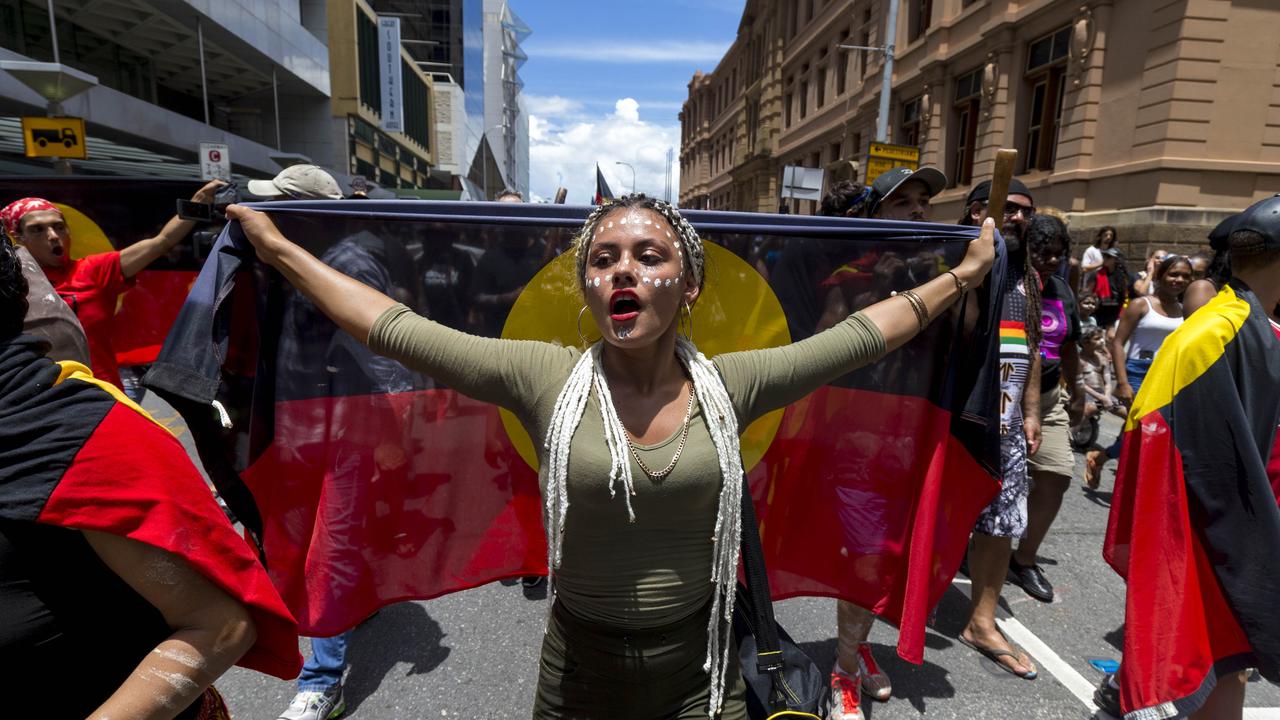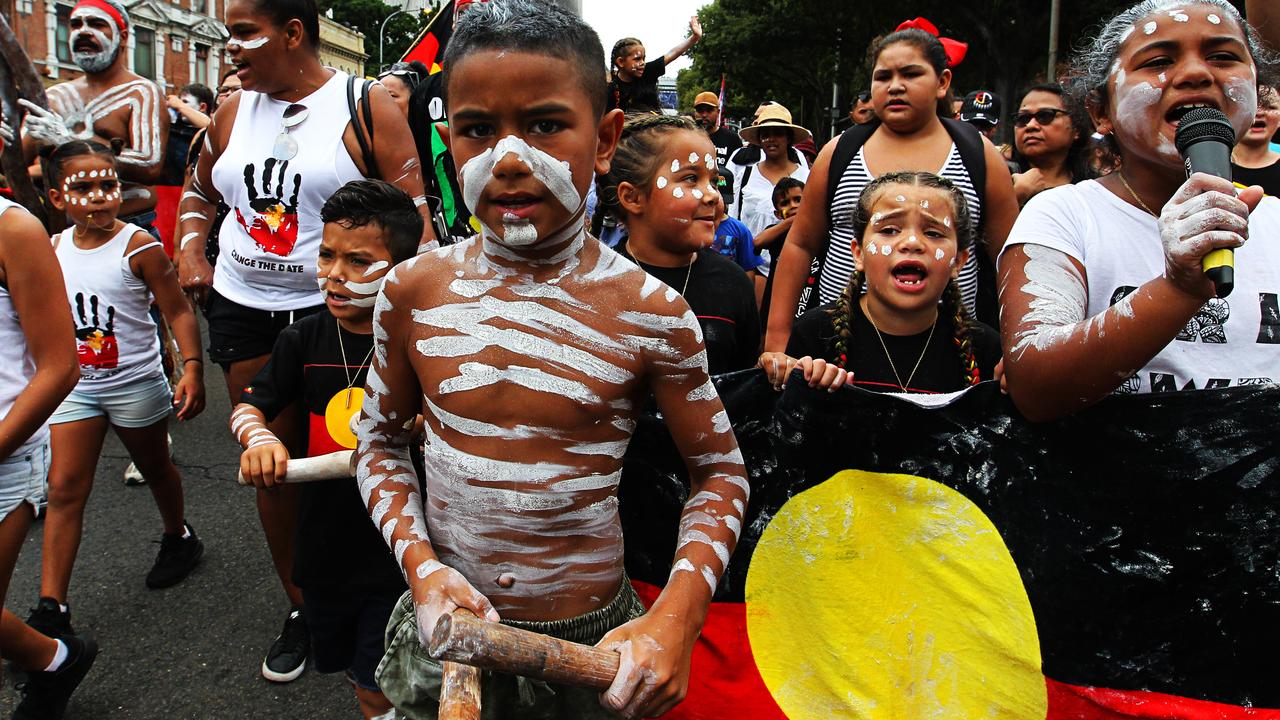Invasion Day protests have become increasingly popular and survived history of clashes with ‘neo-Nazis’
The major Invasion Day protests are only four years old, but have grown in numbers. This how they came up with the name.

This January 26 marks 231 years since the First Fleet landed in Port Jackson.
But for a growing community of Australians the day has become a symbol of inequity and institutionalised harm.
Invasion Day activists contest that Australia Day enforces a false narrative of an Australia that began on this day, and forgets a preceding history. Over the past three years they have gained support with high profile protests in capital cities, although the term “Invasion Day” first came into use in the 1980s, especially in the lead up to the bicentenary in 1988.
Calls to change the date of Australia Day picked up momentum. Different groups organised a protest in Melbourne in 2015 which had an impressive attendance of 400 people.
The group chanted “No pride in genocide” and “Always was, always will be Aboriginal land,” and clashed with a multicultural and sporting parade.
They gathered national attention for the display, with one of the organisers telling a reporter she was surprised at the attendance and support.
After the rally the different groups realised they needed to “have a meeting,” and get organised, author Ken Canning told news.com.au.
He said at that time the groups involved were disparate and hadn’t started referring to the day as “Invasion Day” specifically, but protesters would use the term to describe what the day meant to them.
The following year, the organisers banded together and Invasion Day rallies experienced a massive jump in attendance from 400 to 6000 across the country. The following year in 2017, attendance was at 12,000.
At Invasion Day marches across Australia last year attendance was estimated at somewhere between 27,000 and 30,000.

Mr Canning, who is an author and co-organiser of the rallies which take place in Melbourne, Sydney, Brisbane, Adelaide and Perth, attributes the explosion in success to Fighting In Resistance Equally (FIRE).
He says they have been great at engaging with the broader Australian community and communicating the importance of indigenous issues, including Aboriginal deaths in custody, closing the gap and the removal of indigenous children from their families.
FAR-RIGHT EXTREMISTS ATTENDING INVASION DAY MARCHES
He said in previous years when attendance was smaller, members of far-right extremist groups would turn up and try to make trouble.
He acknowledged the problem of “neo-Nazis running around with flags on their necks, hitting people,” in contemporary Australia.
But Mr Canning said he doesn’t fear for his safety at this year’s rally. “The far right used to turn up when we had small numbers, but now attendance is in the thousands,” he said, adding he believed it was unlikely they would attend.
For the Invasion Day protests this year, the attendees can expect a number of speakers from varied backgrounds, who Mr Canning describes as surviving on “the front line” of these issues. He says deaths in custody will be a focus of the marches this year.
“We’re not trying to spin history,” explains Mr Canning, “We’re trying to blame a system that creates inequity.”
To people that don’t understand the point of view of indigenous Australians, Mr Canning says it’s about education, not attacking another’s point of view. “We lend a guiding a hand,” he says.

Different strides have been made as a result of the efforts of indigenous activists who object to the celebration of Australia Day on January 26. Changing the date is supported by some politicians including Jenny Leong and David Shoebridge.
Two councils in Melbourne made attempts to move citizenship ceremonies away from January 26 in 2017. Prime Minister Scott Morrison has made moves to introduce legislation that would force the councils to continue their ceremonies on the day.
“It’s not about trying to lay guilt on individuals but it’s about trying to make sure that our future, our children and Australians generally, have an understanding of the history of Australia,” said the co-chair of Reconciliation Australia, Professor Tom Calma, in a paper discussing a change of date from 2017.
Professor Calma said continuing dialogue about what the date means is important to wider Australia.



